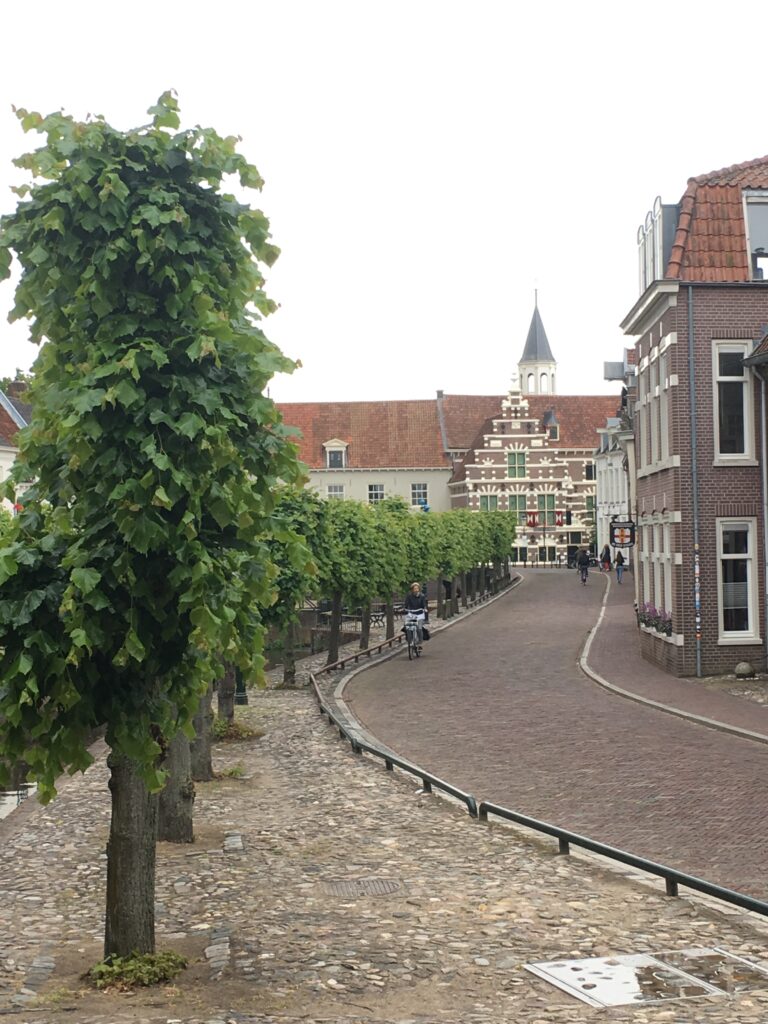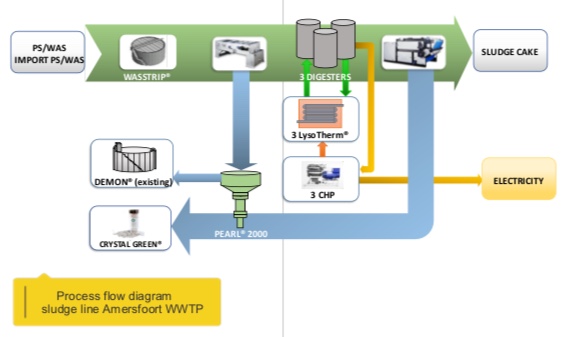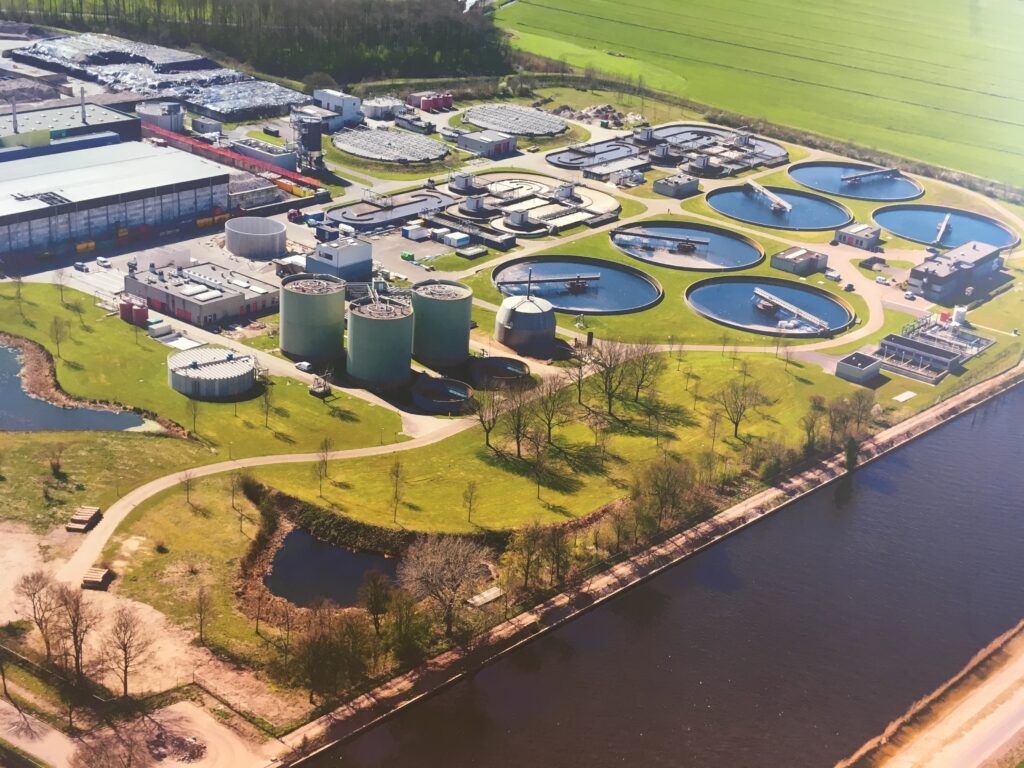By Preston, Environmental Studies; Senior and course TA
After a long day of biking yesterday, we wandered around the old part of Amersfoort, which was centered around the hof and contained within walls built at the beginning of the 14th century. Then we got a much needed good nights rest, and awoke to bike to the Amersfoort Wastewater Treatment Plant (WWTP).

Beyond the standard equipment of a WWTP such as clarifiers and filters, the Amersfoort plant utilizes several additional technologies to reduce their environmental impact, produce energy, and recover phosphorus. These technologies include anaerobic digesters, biogas engines, and phosphorus recovery systems.

They began the improvements to the WWTP in 2011, motivated by water quality issues and the increasing scarcity of phosphate rock. However, this approach is not only beneficial to the environment. The phosphorus recovered from waste is turned into Crystal Green Fertilizer and sold across the globe by a company called Ostara. In Amersfoort, they are able to generate revenue from the fertilizer product they produce, and save money on energy and transport cost of sludge. So, even though these technologies are quite costly to implement, the Amersfoort WWTP is expected to break even after just a decade. They are now exporting energy to the power grid while powering their own plant. Plus, with revenue from selling the fertilizer they can have funds set aside for improvements to other plants in the region.

Ultimately, what the Amersfoort WWTP shows us is an opportunity to shift the paradigm of wastewater management. What is currently viewed as “waste” and something to get rid of is actually quite valuable in the form of energy and nutrients. That’s why the staff of the Amersfoort plant refer to their plant as a Nutrient and Resource Factory. This shift is a necessary one to make, as both phosphate rock and fossil fuels become more scarce. It also presents an opportunity for our food and waste system to become a more circular economy, where the nutrients in the food we eat come from our waste (and therefore our food).
Although a system like this may seem like a lofty goal for a place like Burlington (the Amersfoort plant serves a population of 315,000 people) it is still important to learn from this example. Plus, these technologies are subject to constant innovation. In short, the future seems bright for wastewater treatment- or rather, nutrient and energy production from waste.
Today’s biking distance tracked by Helene: 57.6 kilometers (35.8 miles)
Provinces we have visited or biked through (of 12 in the Netherlands): 2
